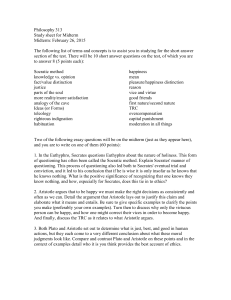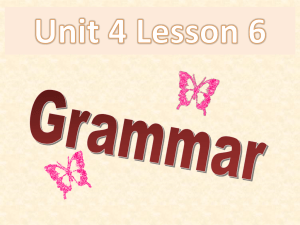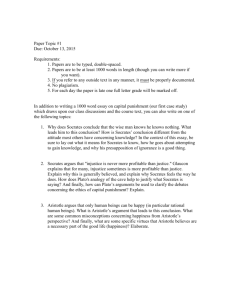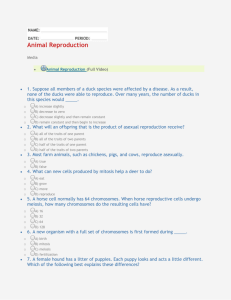Oct 12 Aristotle the biologist
advertisement
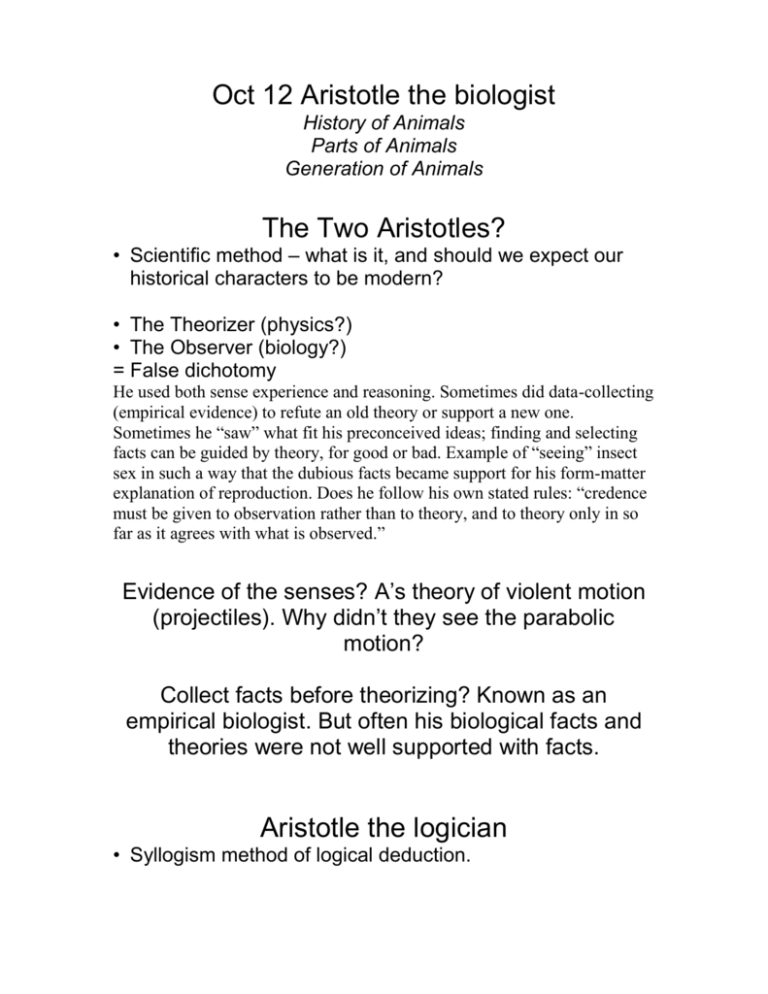
Oct 12 Aristotle the biologist History of Animals Parts of Animals Generation of Animals The Two Aristotles? • Scientific method – what is it, and should we expect our historical characters to be modern? • The Theorizer (physics?) • The Observer (biology?) = False dichotomy He used both sense experience and reasoning. Sometimes did data-collecting (empirical evidence) to refute an old theory or support a new one. Sometimes he “saw” what fit his preconceived ideas; finding and selecting facts can be guided by theory, for good or bad. Example of “seeing” insect sex in such a way that the dubious facts became support for his form-matter explanation of reproduction. Does he follow his own stated rules: “credence must be given to observation rather than to theory, and to theory only in so far as it agrees with what is observed.” Evidence of the senses? A’s theory of violent motion (projectiles). Why didn’t they see the parabolic motion? Collect facts before theorizing? Known as an empirical biologist. But often his biological facts and theories were not well supported with facts. Aristotle the logician • Syllogism method of logical deduction. • Modelled on geometric proofs – from a known general truth to proving new specific truths. (is it really something new or just a specific case of the already accepted?) • Is this approach useful in scientific research? • Classic formulation of syllogism: All men are mortal. (true principle) Socrates is a man. (true principle) Therefore Socrates is mortal. (thus demonstrated) Goals of his biology work • Order the diversity of life. • Medical uses. • Empirical evidence for and/or exemplars of his doctrine of 4 causes. Animals and their parts can be explained as “for the sake of.” (Formal, efficient, and teleological causes are all the same = “soul” of all living things.) Value of biological study • “For even those animals that are not attractive to the senses, yet to the intellect the craftsmanship of nature provides extraordinary pleasures for those who can recognize the causes in things.” Aristotle’s teleology • Study whole animal, and its “needs” for survival, for actualizing its form. • Explain structures in terms of functions. Each part/organ exists for a purpose for the good of the animal. • The final cause of each animal is its own complete state, and nothing more. [no designer god.] A tiger is born and grows into an adult for the sake of becoming a tiger. Theories of generation (reproduction) • Old debate: do both male & female contribute seed? What is it, what is it made from? How does offspring inherit traits from father/mother? • Old theories: pangenesis, preformation Aristotle’s theory: male vs female roles • Father contributes the form to the embryo. (“active”) Does not contribute any material. Evidence from insects and birds – no fertilization. • Mother contributes the material. (“passive”) • Male is more “complete” because he has more “hot” quality, more concocted (cooked). Hotness is the superior condition. Female as “deformed male.” – Fact or theory or gender bias? – Rational reasons for believing this? Females have less hotness; can’t fully concoct their matter-form; don’t develop complete “human form.” Heredity theory: taking after the father/mother – Complete development of embryo produces the traits of the father = actualized form. – Less complete development produces more traits of the mother. – Least complete development produces a monster = does not have human form. Classifying species • OBJECTIVE? • highest to lowest ranking: criteria • Based on type of “soul” (psyche) each group contains. Nutritive (nutrition in plants), sensitive (sense, locomotion in animals), rational (humans). The soul/form is dependent on matter, so does not exist separately from it or after death. No immortality. • Based on amount of heat each group has. (blooded vs bloodless; hot vs cold-blooded). Theory that the function (telos) of the lungs in higher animals is to cool the overheated bodies, to release heat thru breath and take in cooler air. • Based on how they bear young: viviparous (live), complete eggs, incomplete eggs, asexual, spontaneous generation. • Ranked lowest to highest forms of life on the “great chain of being” (scale/ladder). Scale of nature • • • • • • • • Man Viviparous quadrupeds Birds with complete eggs Reptiles with complete eggs Fish with incomplete eggs Insects with incomplete eggs Mollusks, worms by asexual reproduction Sponges, insects by spontaneous generation from nonliving matter




